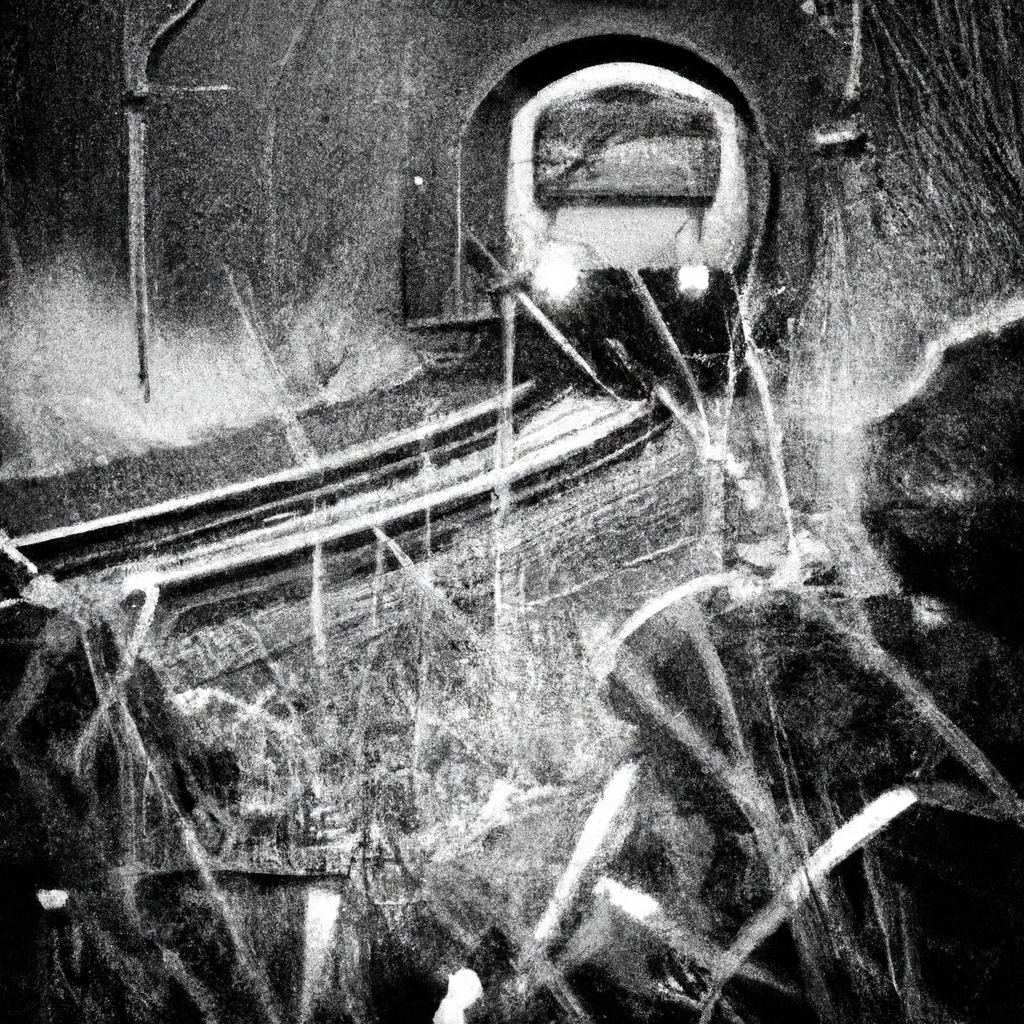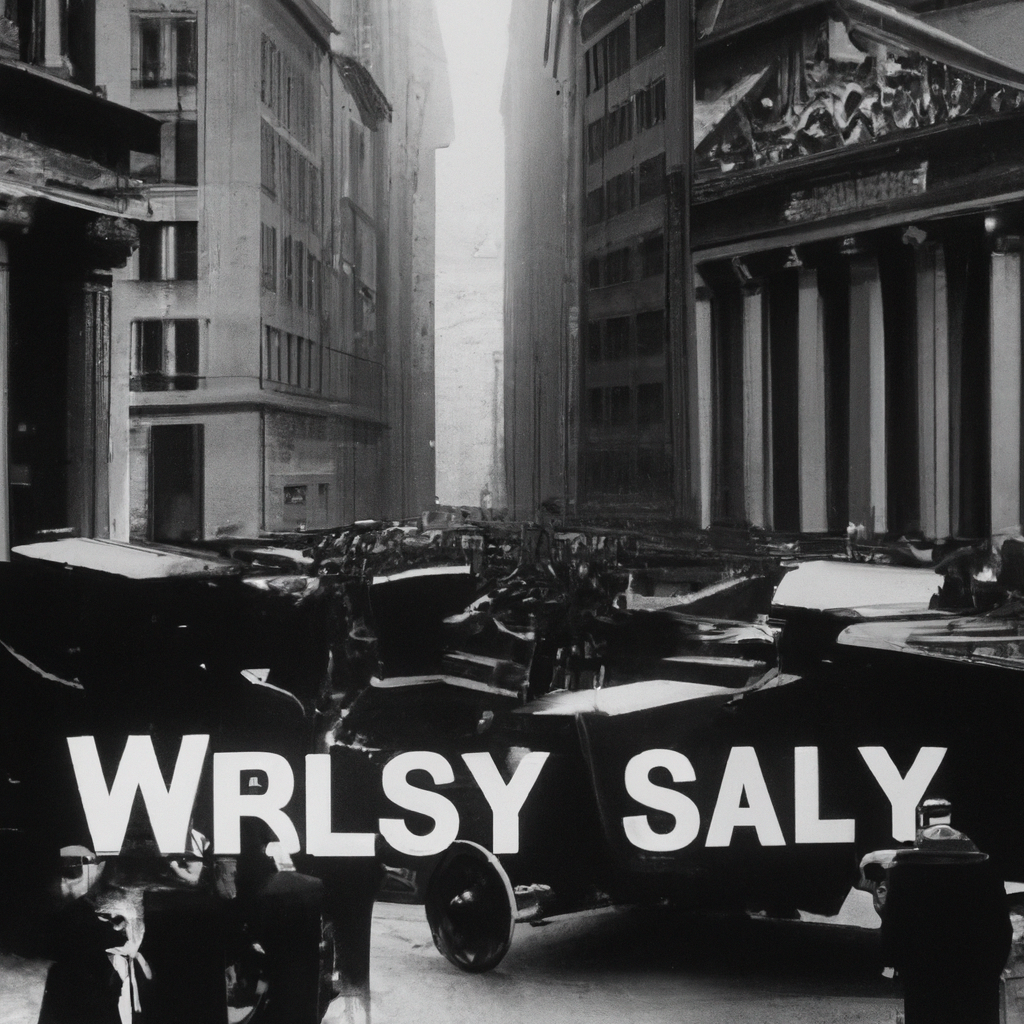Throughout history, there have been many examples of economic bubbles that have caused immense damage and disruption to economies. In this article, we will explore nine of the biggest economic bubbles in history and what lessons we can learn from them. From the Dutch Tulips Bubble to the crypto bubble of the 2010s, find out in this article how these events shaped economies and how they could be avoided in our own investments.
Introduction
It’s human nature to believe that we are smarter than those who came before us. We like to think that we have learned from the mistakes of the past and that we are now better equipped to deal with whatever life throws our way.
However, history has a funny way of repeating itself. This is especially true when it comes to economic bubbles.
What is an economic bubble? An economic bubble is a period of time where there is an inflated price for assets or commodities that eventually leads to a sharp decline in prices (and often causes a recession).
There have been many economic bubbles throughout history, some more famous than others. Here are Nine of the biggest economic bubbles in history and what we can learn from them:
Dutch Tulips Bubble (1637)

The Dutch Tulip Bubble is often cited as the first recorded economic bubble. In the early 1600s, tulips were introduced to the Netherlands from Turkey and quickly became a status symbol among the Dutch upper class. By 1637, tulipmania had reached its peak, with some bulbs selling for more than 10 times their weight in gold.
However, the bubble soon burst, leaving many people bankrupt.
What can we learn from this history lesson?
First and foremost, don’t get caught up in the hype! When everyone around you is buying into a new investment, it’s important to do your own research and make sure you understand the risks involved.
Secondly, don’t put all your eggs in one basket. Diversifying your investments is crucial in protecting yourself from sudden market crashes.
South Sea Company Bubble (1720)

The South Sea Company was founded in 1711 as a joint-stock company to trade with South America. The company was granted a monopoly on trade with Spain’s colonies in South America, which resulted in high profits for the company and its shareholders. However, the share price of the company began to rise rapidly in 1719, fueled by speculation that the company would soon be awarded a contract to supply slaves to the Spanish colonies. This speculation caused the share price to increase tenfold between 1719 and 1720.
However, the bubble eventually burst after it became clear that the Spanish were not going to award the contract to the South Sea Company. This led to a sharp decline in the share price, which caused many investors to lose their life savings. The South Sea Company Bubble is often cited as an example of how speculation can lead to economic bubbles.
The Mississippi Bubble

The Mississippi Bubble, also known as the “Mississippi Company bubble,” was an economic bubble that occurred in France in the early 18th century.
It was caused by the speculation in shares of the Mississippi Company, which had been granted a monopoly on trade with France’s colonies in the Americas, including Louisiana. The company was promoted by John Law, a Scottish economist and adventurer, who convinced the French government to back the company and its expansion plans.
As a result, the value of the company’s shares soared, and speculation in the shares became widespread.
Many people, including members of the French aristocracy, invested their money in the company, leading to a significant increase in the value of its shares. However, the bubble eventually burst, as the company was unable to meet the high expectations and deliver the profits it had promised. The value of the shares collapsed, and many investors lost their savings.
The crisis led to a severe economic downturn in France and damaged the reputation of the French monarchy.
U.K. Railway Bubble (1845)

The United Kingdom’s railway bubble of 1845 was one of the biggest economic bubbles in history. The bubble was caused by a combination of factors, including a new technology (the railways), a rapidly growing economy, and investor speculation.
The railways were a new technology that allowed for much faster travel than previously possible. This made them immensely popular, and led to a boom in railway construction. The rapidly growing economy meant that there was more money available to invest in the railways, and investors were eager to take advantage of the new opportunities presented by the railway boom.
However, the speculative frenzy that surrounded the railway boom eventually led to an economic bubble. Railway shares became wildly overvalued, and when the bubble finally burst, many investors lost a great deal of money.
Despite the disastrous consequences of the railway bubble, there are some positive lessons that can be learned from it. For example, the railway bubble showed how new technologies can create huge opportunities for investment and growth. It also showed how investor speculation can lead to economic bubbles. These lessons can help us avoid making similar mistakes in the future.
Stock Market Bubble of 1920’s(Wall street crash of 1929)

The stock market bubble of 1929, also known as the “Roaring Twenties bubble,” was a period of excessive speculation and rapid economic growth in the United States during the 1920s.
Stock prices soared as investors, encouraged by a booming economy and a bull market, poured money into the stock market.
Many people, including middle-class Americans, invested in the stock market for the first time, buying stocks on margin (using borrowed money). The Federal Reserve also kept interest rates low, making it easy for investors to borrow money to invest in the stock market.
However, the bubble eventually burst, and the stock market crash of 1929 led to the Great Depression.
On October 24, 1929, also known as “Black Thursday,” the stock market began to decline rapidly, and the trend continued on “Black Monday” and “Black Tuesday” (October 28 and 29, 1929). Many investors panicked, and the stock market lost a significant portion of its value.
The crash led to a severe economic downturn, and many investors lost their savings. The effects of the crash were felt worldwide, and it marked the beginning of the Great Depression, a period of severe economic hardship that lasted until the late 1930s.
Japanese Real Estate Bubble (1980s)

The Japan real estate bubble was a period of rapid economic growth in the 1980s, during which Japanese property prices soared to unprecedented levels. The bubble burst in the early 1990s, leading to a sharp economic downturn and years of stagnation.
While the causes of the bubble are complex and disputed, they include low interest rates, easy credit conditions, speculative investor behavior, and a lack of regulations on property development and lending.
The bubble had far-reaching consequences for the Japanese economy, including a banking crisis, increased government debt, and slower economic growth.
Despite its many negative effects, the Japan real estate bubble offers some important lessons for other economies. For example, it highlights the importance of effective regulation in preventing asset bubbles from forming. It also demonstrates the dangers of excessive debt-fueled investment and the need for policymakers to be aware of potential risks in the economy.
Dot-Com Bubble (1990s)

The Dot-Com Bubble was a period of economic expansion in the 1990s that was fueled by investment in internet-based companies. The bubble burst in 2000, leading to a recession.
Many people believe that the Dot-Com Bubble was caused by over-investment in internet-based companies. These companies were often start-ups with no real revenue or profit, but they received a lot of funding from investors who believed that they would be the next big thing.
When the bubble finally burst, many of these companies went bankrupt and investors lost a lot of money. The Dot-Com Bubble is often cited as an example of why it’s important to be careful when investing in new technology.
U.S. Housing Bubble (2006–2008)

The U.S. housing bubble was a period of rapid growth in the value of residential real estate in the United States, followed by a sharp decline. The rise in prices was fueled by easy credit conditions and a strong demand for housing. However, when the bubble burst, many homeowners found themselves with mortgages that were worth more than their homes. This led to a wave of foreclosures and helped contribute to the Great Recession.
There are several lessons that can be learned from the housing bubble:
Be careful with leverage: Leverage is when you use borrowed money to finance an investment. It can help you amplify your returns, but it can also magnify your losses if the investment goes bad. In the case of the housing bubble, many people used leverage to buy homes they couldn’t afford. When prices started to fall, they quickly found themselves underwater on their mortgages.
Don’t blindly trust experts: During the housing bubble, there were plenty of so-called experts who said that prices would continue to go up indefinitely. Of course, we now know that this wasn’t true. If something sounds too good to be true, it probably is.
Diversify your investments: Putting all of your eggs in one basket is always risky. This is especially true in the case of investments like real estate, which can be very volatile. By diversifying your portfolio across different asset classes, you’ll be better protected if one market crashes
Crypto Bubble (2017–2018)

When it comes to economic bubbles, there are few that have been as big as the one that occurred with cryptocurrencies in 2017 and 2018. This bubble saw the value of Bitcoin and other major cryptocurrencies increase by hundreds of percent, only to come crashing down soon after. While there were many factors that contributed to this bubble, including speculation and hype, the main reason for its existence was due to the fact that there was simply no fundamental basis for the prices of these assets. In other words, people were buying them purely because they thought they would be able to sell them at a higher price in the future, which is not sustainable in the long run.
What can we learn from this bubble?
First and foremost, we need to be aware of the dangers of investing in assets that have no real underlying value.
If something doesn’t have a solid foundation to support its price, then it’s likely that it will eventually collapse. Secondly, we need to be careful of getting caught up in hype and speculation. Just because everyone else is doing something doesn’t mean that it’s a good idea, and this is especially true when it comes to investments. Finally, we need to remember that bubbles always eventually burst, so it’s important not to put all our eggs in one basket – even if that basket looks like it’s about to make us a lot of money.
What We Can Learn From Past Mistakes?
In every economic bubble, there are those who benefit immensely and those who lose everything. The key to coming out ahead is to learn from the mistakes of the past.
The most important lesson we can take from past bubbles is that they always end badly. No matter how good things seem to be going, eventually the bubble will burst. This is why it’s so important to be cautious when investing during times of economic prosperity.
Another lesson we can learn is that there are always warning signs before a bubble bursts. For example, in the lead-up to the housing market crash of 2008, there were signs that prices were getting too high and that lenders were becoming too lenient with their standards. If we can identify these warning signs early on, we can avoid making the same mistakes that led to those disastrous outcomes.
Finally, we must remember that not all bubbles are created equal. While some may cause widespread economic devastation, others may only impact a specific industry or sector. This is why it’s so important to diversify our investments and not put all our eggs in one basket. By diversifying, we protect ourselves from the worst possible outcome should a particular bubble burst.
Must read: Ford motor company stock price prediction
Must read: Day trading and how it works
Must read: Apple stock price prediction
Must read: How to invest in real estate a step by step guide
Must read: is real estate a risky investment a step by step guide
Must read: The ultimate guide for raising capital for commercial real estate
FAQ
An economic bubble is a period of excessive speculation and rapid economic growth, characterized by a rapid increase in asset prices followed by a sudden crash, leading to economic downturns and financial losses for investors.
Some of the largest and most well-known economic bubbles in history include: the Dutch Tulip Mania of the 1630s, the South Sea bubble of the early 18th century, the Wall Street Crash of 1929, the dot-com bubble of the late 1990s, the housing bubble of the mid-2000s, the Cryptocurrency bubble of 2017-2018, the Mississippi bubble of the early 18th century, the Japanese Asset Price Bubble of the 1980s, the UK Railway bubble of the mid-19th century.
The Wall Street Crash of 1929 was caused by a combination of factors, including excessive speculation, a lack of regulation, and a failure of the Federal Reserve to respond to the crisis. Many investors, encouraged by a booming economy and a bull market, poured money into the stock market, leading to a significant increase in stock prices. However, the bubble eventually burst, and the stock market crash of 1929 led to the Great Depression.
The housing bubble of the mid-2000s had a significant impact on the global economy. The prices of housing reached unsustainable levels before crashing, leading to a financial crisis in 2008. The crisis led to a severe economic downturn, and many people lost their homes and savings. It also had a significant impact on the banking and financial sector, leading to a global financial crisis and a recession.

